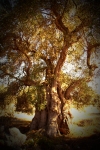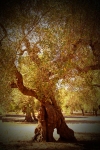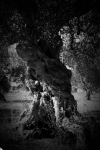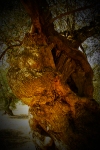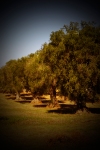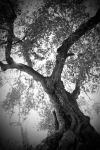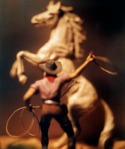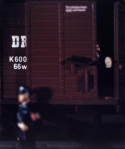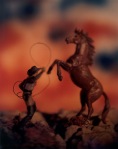Ho atteso molto tempo prima di scegliere come fotografare questo. Molte estati ho trascorso passeggiando per le campagne salentine, osservando l’albero forse più rappresentativo di questa terra aspra e meravigliosa.
Il giallo della campagna nel mese di agosto è un viaggio che potrei definire “allucinato”. Il suono insistente delle cicale, e sopra ogni cosa, il caldo impietoso..che impone riposo…attesa. Sotto questa attesa, infiniti ulivi aprono le loro fronde al passeggero e al pellegrino, che si stende rinfrancato dall’ombra. Per quanti come me hanno lasciato la loro terra e vivono lontano, tornare ad osservare l’immobilità del tempo in una giornata afosa, in terra d’Otranto, è un po’ recuperare un tempo lontano…lontano secoli di gloriose battaglie, ma anche di sudore del contadino, di raccolti poveri e prezioso olio…oro del Salento. L’ulivo è tra i soggetti più fotografati nella mia meravigliosa Salento.
anche io volevo fotografarli, ma non sono mai riuscito, e forse neppure ora ci riesco davvero. La domanda principale è sempre stata: cosa mi resta dell’essere salentino? ho tentato di liberarmi di questa che per molto tempo è stata una etichetta…poi mi sono sentito lusingato e ammirato da invidiosi turisti che hanno spalmato lodi sulle nostre estati…ovvio…complice la musica ormai marchio di fabbrica dell’essere Salento, della grade calca della “notte della taranta” …ho voluto sfuggire però a questo, perché tutto ciò è il Salento sul catalogo di viaggi…non il mio Salento. Mi sono allora stiracchiato, ho cercato di tirami su con tutto il corpo, cercato di strappare le mie radici, come un serpente che lotta per cambiare pelle.
ho lacerato le mie carni mostrandomi in un’altra forma, e ho capito…osservando l’ulivo…che sono come lui…sapete cosa di dice dell’ ulivo? che un tempo fosse alto dritto e robusto…ma che durante la crocifissione di Cristo, o meglio la notte prima, quando i sacerdoti del tempio mandarono le guardie a scegliere l’albero su cui inchiodare Gesù…tutti gli alberi di terra d’Oriente cominciarono a deformarsi, in forme impossibili, dolorosamente si scomposero…rendendo impossibile crocifiggerci Cristo.
Dunque ho compreso la bellezza di questo albero…la sua fierezza…anche lui, come me, ha tentato di sradicare le sue radici…un tentativo vano…poiché non esiste Salento senza ulivo…e non esisto io senza Salento. A questa terra dedico questo piccolo lavoro fotografico.


